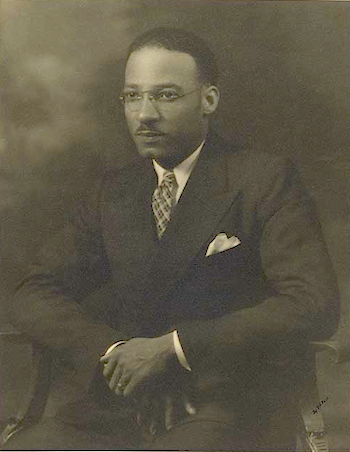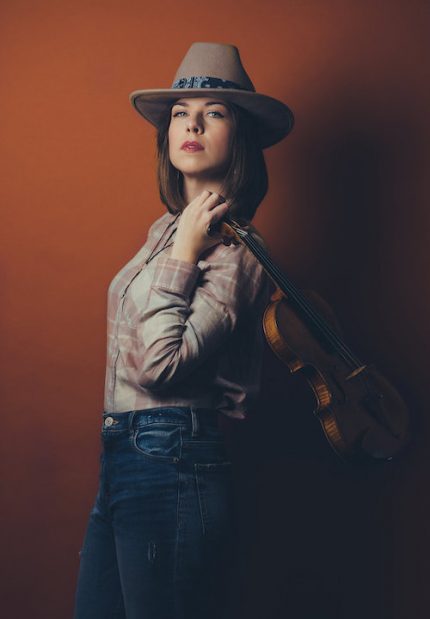Chicago Sinfonietta returns with bluegrass fiddling and a neglected symphonic gem

The Chicago Sinfonietta kicked off its season Saturday night at Wentz Concert Hall in Naperville, returning in style from the 18-month coronavirus void. The orchestra’s young and personable new CEO Blake-Anthony Johnson made a brief yet apt introduction, noting that there is no substitute for great music experienced live and in person.
Starting her tenth season leading the Sinfonietta, music director Mei-Ann Chen led a venturesome and thoughtful program that Paul Freeman—the ensemble’s enterprising founder and longtime guiding light—would likely have enthusiastically approved. The leitmotif was folk music, spotlighting a contemporary concerto and a neglected work by a 20th-century African-American composer, each drawing from populist influences. (The program will be repeated tonight at Symphony Center.)
While music of William Grant Still and Florence Price has been programmed with greater regularity in recent years, works by other black composers from the past century remain largely neglected and unperformed.
Few works are more deserving of exhumation than William Dawson’s Negro Folk Symphony. Chen led the work’s belated Chicago premiere several seasons back and kudos to her for reviving it once again in this post-pandemic season opener.

Born in Alabama, Dawson graduated from the Horner Institute of Fine Arts and performed as a trombonist. He later studied at the Chicago Musical College with Felix Borowski and for a time played in the Civic Orchestra.
Dawson earned most recognition in his long lifetime (1899-1990) for his exhaustive work popularizing African-American spirituals. Many of his transcriptions and choral arrangements are still regularly performed today.
Less well known is his only large-scale work, the Negro Folk Symphony, which was premiered by no less than Leopold Stokowski and the Philadelphia Orchestra in 1934. The conductor took the work on tour to Carnegie Hall where Dawson’s symphony received enthusiastic acclaim. (Stokowski’s later recording remains the touchstone.)
As the title suggests, Dawson draws on the inspiration of black melodies, folksong and spirituals in a three-movement arc that reflects the African-American experience. The first movement, “The Bond of Africa” opens with an imposing horn solo reflecting the homeland, leading to a yielding second theme first heard in the oboe.
The central section, “Hope in the Night,” starkly depicts the horrors of Southern slavery yet also offers deliverance in a hopeful theme for English horn. The finale, “Oh Lem-me Shine,” builds on two melodies, alternating their development and building inexorably to a resoundingly affirmative coda.
Despite the heavy folk influence of his material, Dawson’s symphony never descends to mere pastiche. Indeed, in his working out of the themes and contrasts, Dawson’s orchestral writing shows impressive skill and sophistication—at least as much as in Grant Still’s “Afro-American Symphony.”
Chen led a reading that was boldly projected, giving a silver-screen swagger to Dawson’s soaring themes and dramatic climaxes. At times, the performance would have benefited from a wider dynamic range and greater refinement, especially with the more inward episodes. In an intimate, very live acoustic like Wentz, the percussion-heavy final bars proved a bit overwhelming.
Still, even if this performance stayed too often on the near side of loud, the dedication of Chen and the Sinfonietta musicians was never in doubt. Most orchestral solos were solidly played and the final section, as the jazz-inflected syncopations kick into overdrive, was undeniably exhilarating.
Sky by Michael Torke was the evening’s centerpiece. A violin concerto in all but name—Torke likes one-word titles—the work was written in 2018 for Tessa Lark, who was also solo protagonist with the Sinfonietta in this local premiere.

Cast in three movements running 23 minutes, Sky is nothing is not earnest in its accessibility, mining bluegrass and country fiddling in each of the three movements. Lark is a classically trained musician with a long list of credentials, yet she is clearly fully in synch with the bluegrass fiddling of her native Kentucky. The fact that she also worked closely with Torke in styling the solo passages also shows her natural fluency in the score.
Inevitably, it’s hard to avoid comparisons with Edgar Meyer’s Violin Concerto (1999)—especially since it was Lark that also gave Meyer’s similarly bluegrass-flavored piece its local debut with the Illinois Philharmonic Orchestra in 2017.
Torke is a gifted composer and skilled craftsman yet pleasant and likable as Sky is, the comparison is not to his advantage. Meyer manages to more adroitly blend the grit of the populist elements within a classical concert idiom. He also plumbs a deeper vein of expression in his concerto with themes that stick in the memory. Torke’s Sky lacks that indelibility and for all its ingratiating nature, the piece never rises above an easy-going suite of bluegrass fiddling.
That said, one could hardy want more spirited advocacy than that provided by Tessa Lark, its dedicatee. On Saturday the somewhat impatient rendering of the slow movement could have conveyed more of its “Wistful” title. Yet the outer movements bristled with foot-stomping energy and verve, and Lark raced through the “Spirited” finale, tossing off its brilliant fireworks with airtight technique and at furious velocity. Chen was a simpatico partner, bringing equally vital support, though here too, the music would have benefited from a more nuanced palette of colors and dynamics.
At the risk of lily-gilding, Lark offered a double-threat bonus of a country song/violin encore with “Do Round My Lindy – Bowin’ the Strings.” She began singing the song through her mask while playing the violin, yet the encore quickly turned into a Heifetzian fiddle barnburner. Lark ratcheted up the speed and difficulty of her variations on the folksy ode; just when one thought her playing couldn’t possibly get any faster, she accelerated into an even more dizzyingly whirlwind coda.
Euro folk opened the concert as mined by Franz Liszt in his Hungarian Rhapsody No. 2. Chen led a boisterous rendition with podium leaps and calisthenic lunges that make Leonard Bernstein seem catatonic. The performance was energetic on a raw, visceral level even if the charm and sly wit of Karl Müller-Berghaus’s arrangement was left largely in the dust.
The program will be repeated 7:30 p.m. Monday at Symphony Center. chicagosinfonietta.org
Posted in Performances


